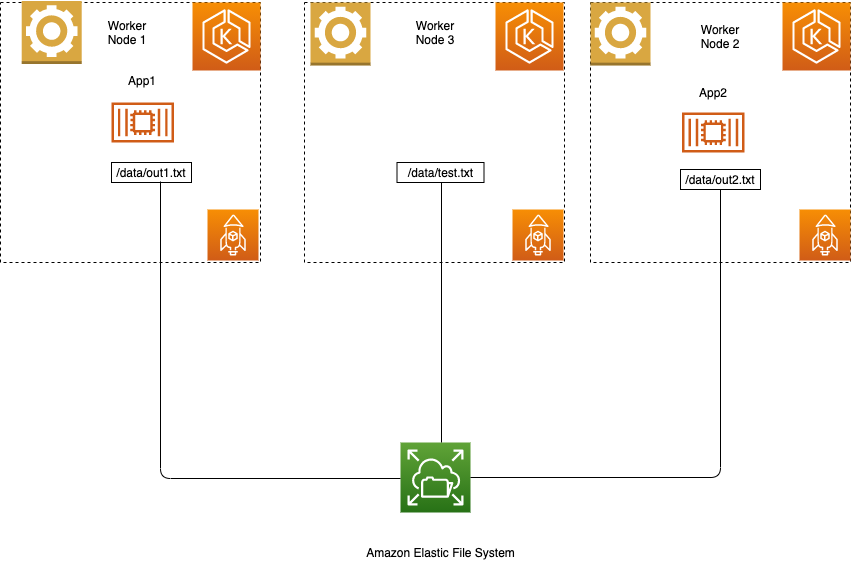Containers
Capturing logs at scale with Fluent Bit and Amazon EKS
Earlier this year, AWS support engineers noticed an uptick in customers experiencing Kubernetes API server slowness with their Amazon Elastic Kubernetes Service (Amazon EKS) clusters. Seasoned Kubernetes users know that a slow Kubernetes API server is often indicative of a large, overloaded cluster or a malfunctioning controller. Once support engineers ruled out cluster size as […]
Persistent Storage using EFS for EKS on Bottlerocket
In this post, we discuss about how to achieve persistent storage with Amazon Elastic Kubernetes Service (Amazon EKS) clusters running on Bottlerocket OS with Amazon Elastic File System (Amazon EFS). Persistent storage is needed for long running stateful applications to persist state for high availability or to scale out around shared datasets. This is true […]
Getting started with Bottlerocket and Amazon ECS
Last week we announced the general availability of the Amazon Elastic Container Service (Amazon ECS)-optimized Bottlerocket AMI and Bottlerocket support for Amazon ECS is now generally available. Bottlerocket is an open source project that focuses on security and maintainability, providing a reliable, and consistent Linux distribution for hosting container-based workloads. In this post, I am […]
Fluentd considerations and actions required at scale in Amazon EKS
Fluentd is a popular open source project for streaming logs from Kubernetes pods to different backends aggregators like CloudWatch. It is often used with the kubernetes_metadata filter, a plugin for Fluentd. The filter enriches the logs with basic metadata such as the pod’s namespace, UUIDs, labels, and annotations. It collects this information by querying the […]
Expanding modernization scenarios using the AWS App2Container integration with AWS App Runner
Many enterprises want to rapidly modernize their existing applications by containerizing them with minimal effort or investing time in gaining expertise in container technologies. That’s why AWS launched AWS App2Container (A2C) in June 2020, a service that helps customers containerize .NET and Java applications without making any code changes. A2C analyzes the running applications and […]
Choosing serverless: Babbel’s migration story
Who is Babbel? Babbel is a whole ecosystem of language learning offerings, including the world’s best selling language learning app. With more than 10m subscriptions sold and over 60.000 courses for 14 languages, we created the No. 1 destination for language learners globally. We have been running our platform on Amazon Web Services (AWS) since […]
Rolling EC2 AMI updates with capacity providers in Amazon ECS
When deploying containers to Amazon Elastic Container Service (Amazon ECS), customers have choices as to what level of management they want or need to have over the cluster compute. First there is AWS Fargate, which is a serverless compute engine that removes the need for customers to provision and manage servers. This approach simplifies the […]
A multi-cluster shared services architecture with Amazon EKS using Cilium ClusterMesh
Introduction Over the past couple of years, organizations have increased their pace of Kubernetes adoption. They want to be more agile so they can innovate and deliver new products to the market more efficiently. Among many of the early adopters of the Kubernetes platform, it was not uncommon to operate a single large Kubernetes cluster […]
AWS App Mesh ingress and route enhancements
NOTICE: October 04, 2024 – This post no longer reflects the best guidance for configuring a service mesh with Amazon EKS and its examples no longer work as shown. Please refer to newer content on Amazon VPC Lattice. ——– Before today, the AWS App Mesh gateway only allowed for matches on the path of an […]
Integrate ROSA with AWS CodeCommit
Red Hat OpenShift Service on AWS is a fully managed OpenShift service, jointly supported by both Red Hat and Amazon Web Services and managed by Red Hat SRE team. ROSA is an opinionated OpenShift platform on AWS that takes away cluster lifecycle management from the customer, so that they can focus on building applications rather […]









